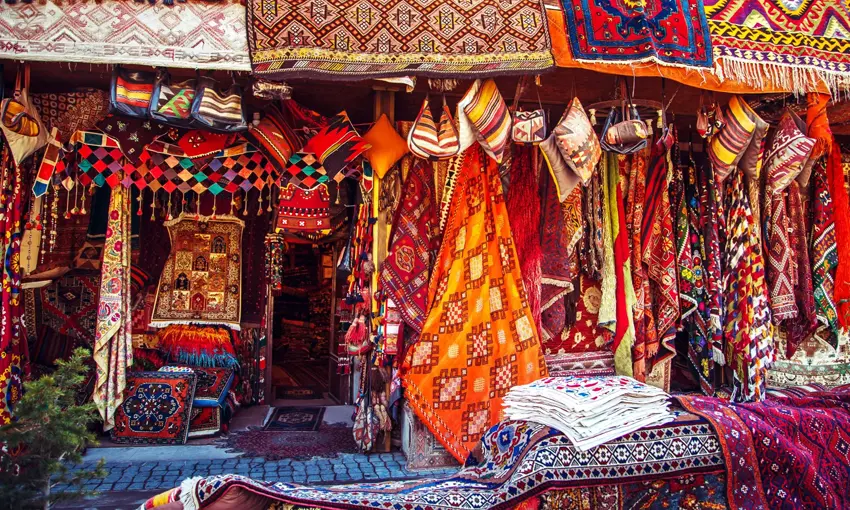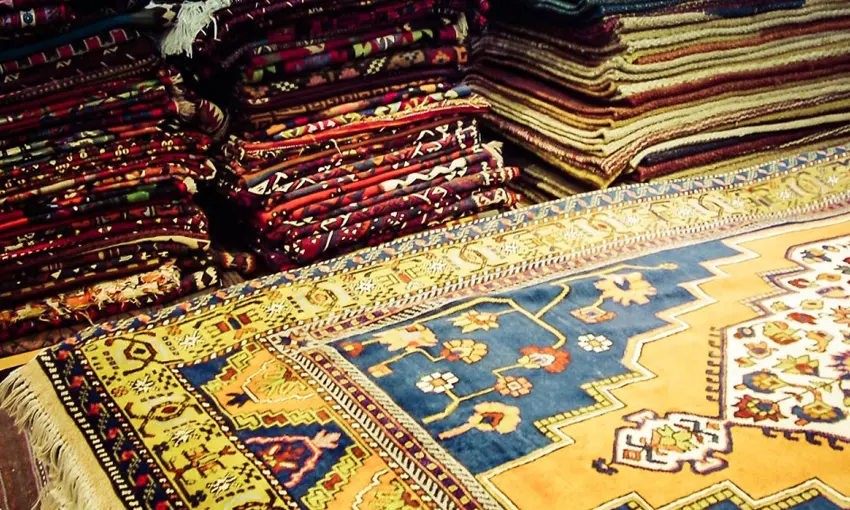Carpet Weaving
The Art of Carpet Weaving in Cappadocia: History and Cultural Heritage
One of the most fascinating aspects of Cappadocia is its carpet weaving. These carpets, made with great effort and care, have been a significant source of income for centuries. With their rich stories and deep meanings, they are one of the region's most important cultural treasures. Developed over centuries along the Silk and Spice Roads, these carpets reflect the artist's, the era's, and the events' marks, shedding light on Cappadocia's rich cultural history.
When you visit Cappadocia, you can see this traditional craft up close in carpet workshops, where you can watch the meticulous weaving process. By purchasing one of these unique carpets, you support the continuation of this craft and bring a piece of Cappadocia into your home.
Origins of Carpet Weaving in Cappadocia
Carpet weaving in Cappadocia began when Turkish tribes brought this art to Anatolia from Central Asia. During the Seljuk period (11th century), carpet weaving became an important craft, and Cappadocia became a center for this art. Seljuk carpets are known for their geometric patterns and bright colors. In the Ottoman Empire, Cappadocia became renowned for its high-quality carpets.
Carpet Weaving Techniques and Materials
Cappadocian carpets are typically woven using wool and cotton threads. These threads are dyed with natural dyes, making the carpets vibrant and long-lasting. The patterns usually include geometric shapes, floral motifs, and traditional symbols, each telling a unique story.
Carpet Making Process
- Material Selection: Cappadocian carpets are generally woven from high-quality wool and cotton threads. Wool is chosen for its durability and natural sheen, while cotton forms the base for the wool threads.
- Preparing the Thread: Wool is cleaned and washed after being sheared from goats. It is then spun into thread, making the threads fine and smooth.
- Natural Dyeing: The threads are dyed with natural dyes, giving the carpets their vibrant and long-lasting colors.
- Weaving: Skilled artisans weave the threads into traditional patterns and motifs on carpet looms. This process requires great patience and attention. Each knot is tied carefully for durability and design integrity.
Natural Dyes and Their Use
The natural dyes used in Cappadocian carpets come from plants, roots, insects, and minerals. These dyes give the carpets their natural and durable colors. Here are some commonly used natural dyes:
- Madder (Rubia tinctorum)
- Color: Red
- Use: The red dye from the madder plant roots gives carpets vibrant and durable red tones.
- Walnut Shell
- Color: Brown
- Use: The brown dye from walnut shells provides rich and natural brown tones in carpets.
- Mint (Mentha)
- Color: Green
- Use: The green dye from mint leaves gives carpets fresh and natural green tones.
- Onion Skin
- Color: Yellow
- Use: The yellow dye from onion skins gives carpets warm and bright yellow tones.
- Indigo (Indigofera tinctoria)
- Color: Blue
- Use: The blue dye from the indigo plant gives carpets deep and durable blue tones.
Meanings of Local Carpet Patterns
The rich patterns and motifs of carpets are not just a visual feast; they also contain deep meanings and symbols. Each pattern and motif reflects the emotions, beliefs, and cultural heritage of the weaver. Here are some common motifs found in Cappadocian carpets and their meanings:
- Elibelinde Motif
- Meaning: A symbol of fertility and abundance, often expressing wishes for birth, marriage, and prosperity. It depicts a female figure with hands on her hips.
- Bird Motif
- Meaning: Represents freedom, spiritual elevation, and good news. Birds also symbolize the ascent of souls to the sky and divine messages.
- Ram's Horn Motif
- Meaning: A symbol of strength, courage, and protection. Ram's horns are used especially in birth and power wishes for male children.
- Love Knot Motif
- Meaning: Represents eternal love and commitment. Depicts two interlocked loops, symbolizing the bond between lovers and married couples.
- Eye Motif
- Meaning: Symbolizes protection against the evil eye. This motif is frequently used in carpets to ward off negative energies.
- Scorpion Motif
- Meaning: Represents the expulsion of evil spirits and dangers. The scorpion shape is woven into carpets to fend off harmful effects.
- Abundance Motif
- Meaning: Symbolizes abundance and prosperity. Often used with agricultural and nature-related patterns, expressing wishes for a good harvest.
- Waterway Motif
- Meaning: Represents water as the source of life and the continuity of life. Wavy lines symbolizing waterways emphasize the continuity of life and the importance of nature.
- Hand and Finger Motif
- Meaning: Represents protection and prayers. The figures of hands and fingers symbolize the desire to protect oneself and loved ones.
- Tree of Life Motif
- Meaning: A symbol of life and immortality. The tree of life, with roots connecting to the earth and branches to the sky, represents the cycle of life and the unity of the universe.
- Dragon Motif
- Meaning: A symbol of power, protection, and courage. Dragon figures refer to mythological powers and protective spirits.
- Sun and Moon Motif
- Meaning: Represents the cycle of light and darkness, life, and death. The sun symbolizes life and energy, while the moon represents peace and the night.
- Meander (Wavy Line) Motif
- Meaning: Symbolizes infinity and continuity. Wavy lines express the continuous cycle of life and the infinity of the universe.
- Feather Motif
- Meaning: Represents lightness, freedom, and protection. Feathers symbolize spiritual freedom and protection.
- Chest Motif
- Meaning: Represents mystery and protection. A chest, as a place where valuable items and memories are kept, symbolizes protection and secrecy.
For reservations and detailed information, just fill out and submit the reservation form. We're here to help, so don't hesitate to reach out to us!




